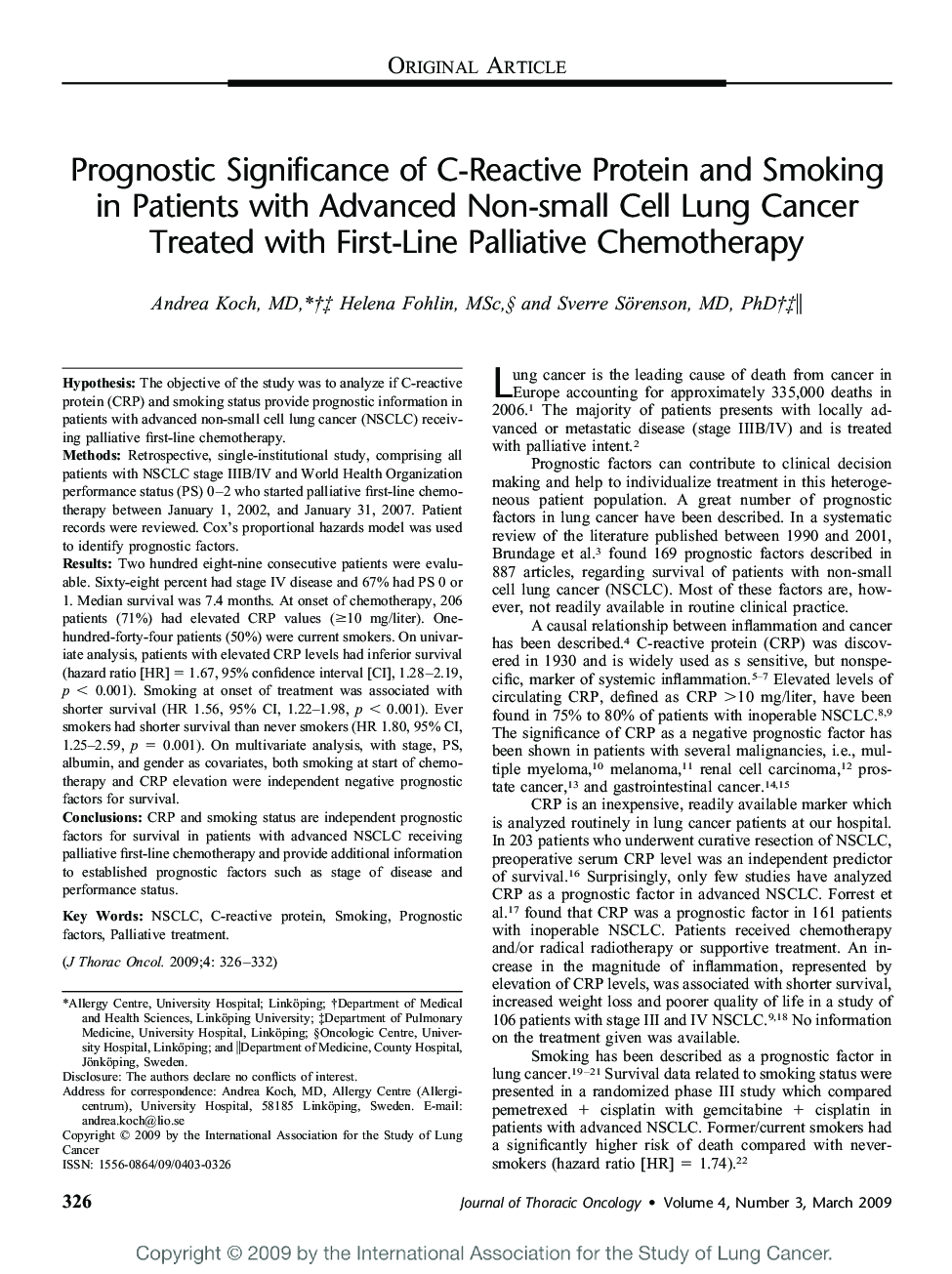| Article ID | Journal | Published Year | Pages | File Type |
|---|---|---|---|---|
| 3991925 | Journal of Thoracic Oncology | 2009 | 7 Pages |
HypothesisThe objective of the study was to analyze if C-reactive protein (CRP) and smoking status provide prognostic information in patients with advanced non-small cell lung cancer (NSCLC) receiving palliative first-line chemotherapy.MethodsRetrospective, single-institutional study, comprising all patients with NSCLC stage IIIB/IV and World Health Organization performance status (PS) 0–2 who started palliative first-line chemotherapy between January 1, 2002, and January 31, 2007. Patient records were reviewed. Cox's proportional hazards model was used to identify prognostic factors.ResultsTwo hundred eight-nine consecutive patients were evaluable. Sixty-eight percent had stage IV disease and 67% had PS 0 or 1. Median survival was 7.4 months. At onset of chemotherapy, 206 patients (71%) had elevated CRP values (≥10 mg/liter). One-hundred-forty-four patients (50%) were current smokers. On univariate analysis, patients with elevated CRP levels had inferior survival (hazard ratio [HR] = 1.67, 95% confidence interval [CI], 1.28–2.19, p < 0.001). Smoking at onset of treatment was associated with shorter survival (HR 1.56, 95% CI, 1.22–1.98, p < 0.001). Ever smokers had shorter survival than never smokers (HR 1.80, 95% CI, 1.25–2.59, p = 0.001). On multivariate analysis, with stage, PS, albumin, and gender as covariates, both smoking at start of chemotherapy and CRP elevation were independent negative prognostic factors for survival.ConclusionsCRP and smoking status are independent prognostic factors for survival in patients with advanced NSCLC receiving palliative first-line chemotherapy and provide additional information to established prognostic factors such as stage of disease and performance status.
